Angkor Wat is a 12th century Hindu-Buddist temple that is well known as the symbol of Cambodia. So much so that it even features on the flag. Not only is the temple huge – the biggest religious monument in the world – but it is actually part of a much wider complex of temples and ruins dotted throughout the jungle outside the town of Siem Reap. There is a lot to explore and a lot to know before you go, so hopefully this article will help you out by answering any questions you may have about visiting Angkor Wat.
How much does Angkor Wat cost?
There are three different tickets that you can purchase for Angkor Wat – a one day pass, a three-day pass or a seven-day pass. Each one increases in price:
| GBP | USD | EUR | |
| One Day Pass | £28 | $37 | €32 |
| Three Day Pass | £46 | $62 | €53 |
| Seven Day Pass | £54 | $72 | €62 |
You can buy tickets from the ticket office but this is not actually located near the entrance of Angkor Wat. I would recommend buying your ticket online in advance so that you can head straight to the temple when you’re ready. If you don’t have a Cambodia SIM card or data on your phone, just make sure your ticket is downloaded before you leave the comfort of your hotel’s wifi. Having an e-ticket also makes it harder to lose. There are various checkpoints throughout the complex and hefty fines for people without valid tickets.
How many days to spend in Angkor Wat?
For most people I would recommend buying the one day pass. You won’t necessarily see absolutely everything in one day, but you’ll definitely see enough. You can pack plenty into one day, especially if you start out early – Angkor Wat opens from 5am for sunrise (more on that later). In fact by the end of one day, you might even be a little tired of seeing ancient temples.
If you prefer to take things more slowly and aren’t in a particular rush, then a three-day pass might be the one for you. I’m fairly sure you could pack in everything you want to see into three days. Unless you’re an archaeology fanatic, I don’t think you would need to purchase the 7 day pass.
How many days to spend in Siem Reap?
For the more broad question of how many days to spend in Siem Reap, the town by Angkor Wat, I would suggest perhaps one or two days more than your Angkor Wat ticket. There isn’t tonnes of other things to see in the town but it is a nice place to explore and relax. If you’re travelling around South East Asia, you may have a long journey to your next stop so take a bit of down time in Siem Reap, rather than jumping straight from Angkor Wat to your next stop.
For example, we stayed three nights in Siem Reap. We arrived in the afternoon after a 6-hour bus from Phnom Penh. We explored a little of the town that evening. The next day we explored the temples. Our last full day was spent mostly relaxing plus a little more roaming around Siem Reap. The final morning we boarded a bus for an 8-hour journey to Bangkok.
How to get to Angkor Wat
First, let’s talk about how to get to Siem Reap – the nearest town to Angkor Wat. You can reach the town fairly cheaply and easily by bus as mentioned above. We took the bus from Phnom Penh but there are also options from Bangkok, Ho Chi Minh City and Kampot. Take a look at bookaway.com for options. You could also fly into Siem Reap International Airport.
To get to Angkor Wat from Siem Reap – there a few options. The best method for you may depend on how you plan on getting around Angkor Wat (see next point). The easiest way is likely to be getting a tuk tuk. These are fairly common, easy to find and inexpensive. You can book a tuk tuk via the app, Grab, which is similar to Uber.
Other options may be renting a bicycle or moped for the day which you can then use to get around the temples throughout the day. If you book onto a tour, either via your hotel or hostel or through another company, this will likely include hotel pick up (just be sure to double check!).
Angkor Wat is more than an hour walk from the centre of Siem Reap so this probably isn’t an appealing option for most!
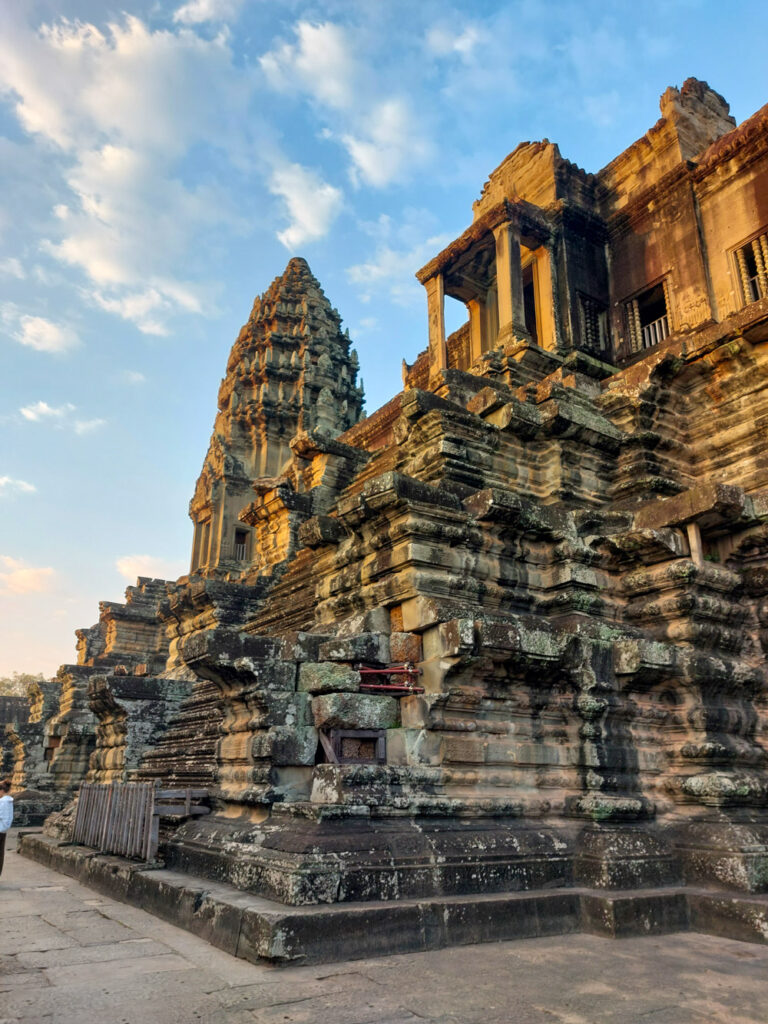
How to get around Angkor Wat
As mentioned, this will likely link in with the previous topic of getting to Angkor Wat. To get around, again there are a few options.
Firstly, if you’re visiting as part of an organised tour then this will be covered for you. You will probably be transported from one temple to another on a minibus with the rest of your group. This has pros and cons and will likely be the most expensive option, apart from having a private guided tour. There will be an ease to this route and you will have a guide included. The downside is your timings and route will be set for you so you may have little freedom to go off track, explore smaller temples, and take your time.
The next option is to hire a tuktuk driver for the day. Now this may sound expensive but may actually only cost around $20. This is only for transport between temples, not a guided tour around them. If you arrange it in advance you could also get a hotel pick up included too. This is the option we ended up doing, although we hadn’t planned to. It turns out it is very easy to pick up a diver on the day by the temples.
The third option is to hire bicycles or mopeds for the day and scoot or cycle yourself around. This could be the cheapest but you will definitely need to arrange this in advance as there aren’t cycle shops near the temples that you can collect from, you will need to start from Siem Reap Town. This option gives you a lot more freedom to explore at your own pace. This is the method we intended to do, but our bikes didn’t end up arriving at our hotel for some reason. The hire was due to cost us $6 each for the day. I suspect we may have gotten a better deal if we had gone to a cycle hire shop directly, rather than through our hotel.
Lastly, I’d say this isn’t really an option but many people ask – can you walk around Angkor Wat? Yes, you can (and will) walk around the actual Angkor Wat temple. But as far as walking from temple to temple, you might struggle and probably won’t fit in as much as you could into one day. To give you an idea, walking from the entrance of Angkor Wat to the next large temple – the Bayon Temple, is a 45 minute walk. It is doable but you’ll like be very tired by the end of the day.
However, you can always start this way and then hail a tuktuk (there are plenty around!) when or if you change your mind. This is what we did when our bikes didn’t show. We set off walking from Angkor Wat to Phnom Bakheng but we were offered a driver along the way.

Do you need a tour guide for Angkor Wat?
This is down to personal preference. We didn’t have a guide but still had lots of fun exploring the temples independently. There are sign posts at some points – mostly interpreting murals and about restoration work, but not a vast amount of information. It is very easy to pick up a guide on the day if you change your mind. We were offered tours regularly around Angkor Wat but less so at the other temples.
What to Wear to Angkor Wat
Cambodia is a fairly modest country in terms of clothing and this is taken very seriously at religious sites, such as Angkor Wat. The dress code dictates no short shorts or short skirts, generally nothing above the knee for all genders – although this seemed stricter for women. Plus no revealing tops, shoulders should be covered. If you don’t have any suitable clothing with you, take a trip to the night market the day before and treat yourself to some new clothes. I picked up a classic pair of elephant traveller trousers for around $5.
Tickets to Angkor Wat aren’t exactly cheap, compared to other attractions in South East Asia so make sure you aren’t turned away because of your clothes. If you aren’t sure, bring a scarf or something to cover yourself with just in case.
Best time to visit Angkor Wat
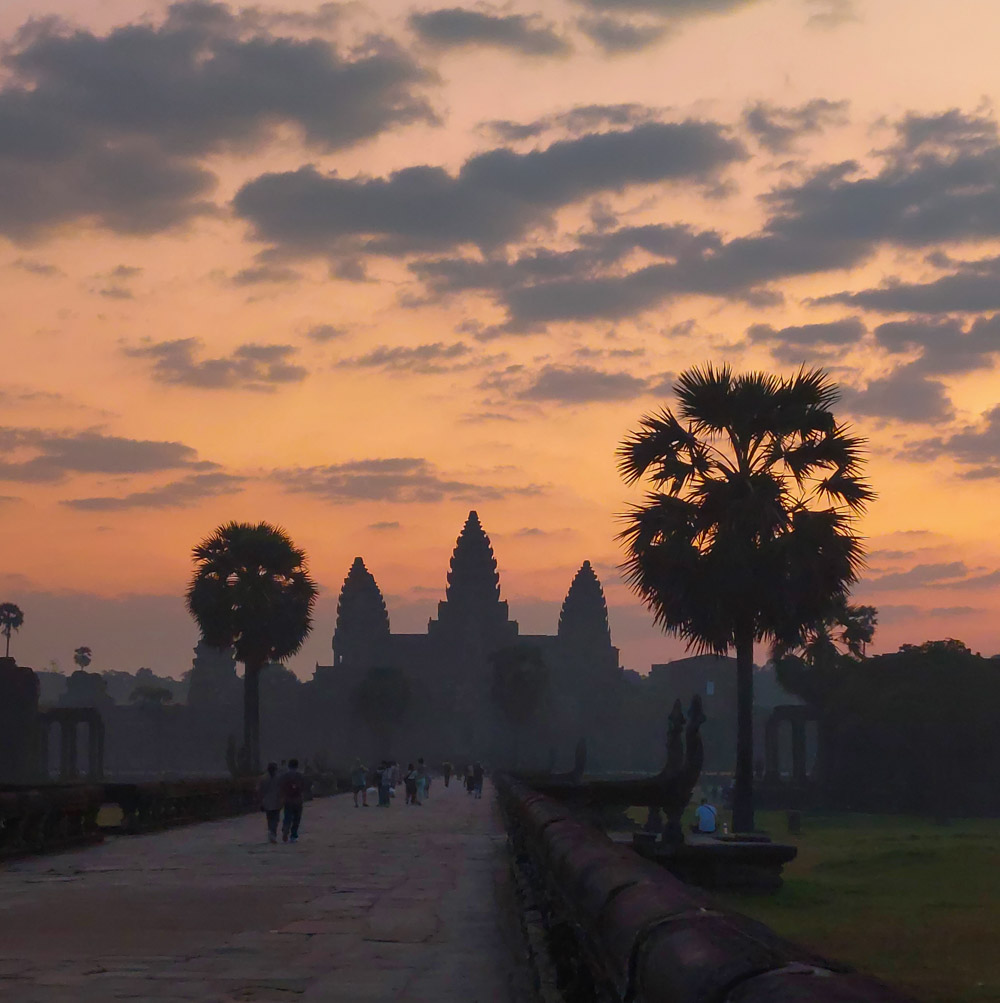
Best time of day to visit Angkor Wat
Angkor Wat is fantastic to see at sunrise. Getting up early is well worth it to see the iconic temple silhouetted against a blazing red and orange sky. The temple is open to visitors from 5am. Although you don’t necessarily need to be there at 5am on the dot to see the sunset. We arrived around 6am when we visited in January and still got some fantastic pictures. The time of sunrise will differ slightly at different times of the year so double check the timings for when you plan to go. Most weather forecast apps will also tell you the time of sunrise and sunset.
If you are planning to go for sunrise, I highly recommend buying your tickets online first so you don’t need to get up even earlier to queue at the ticket office.
Best time of year to visit Angkor Wat
The rainy season in Cambodia falls between May and October. The temples will be much less crowded but of course you’ll have a higher chance of rainfall. Peak temperatures are around March-May, with highs of 35 degrees Celsius (95 Fahrenheit), you may find it more tiring to walk around all the temples in the midday heat. We visited in January, during the dry season with temperature around 25 degrees Celsius (77 Fahrenheit), it was ideal for us.
Best temples to see in Angkor Wat
Angkor Wat
Angkor Wat is the flagship temple so is of course unmissable. You will likely start at Angkor Wat and could spend hours exploring (or getting lost in) this temple alone. There are lots of nooks and crannies to explore. Look out for carvings and murals decorating the walls. You can also walk up a steep set of steps to the top of the central tower.
Phnom Bakheng
Phnom Bakheng is a fairly easy to temple to miss. Many visitors may pass it by completely going straight from Angkor Wat to the Bayon Temple. It isn’t visible from the road. Behind a forest of trees and up a small hill, you’ll find the temple sitting proudly over its high vantage point. From here you can really appreciate how vast the complex is! You should be able to see the famous silhouette of Angkor Wat in the distance.
Bayon Temple
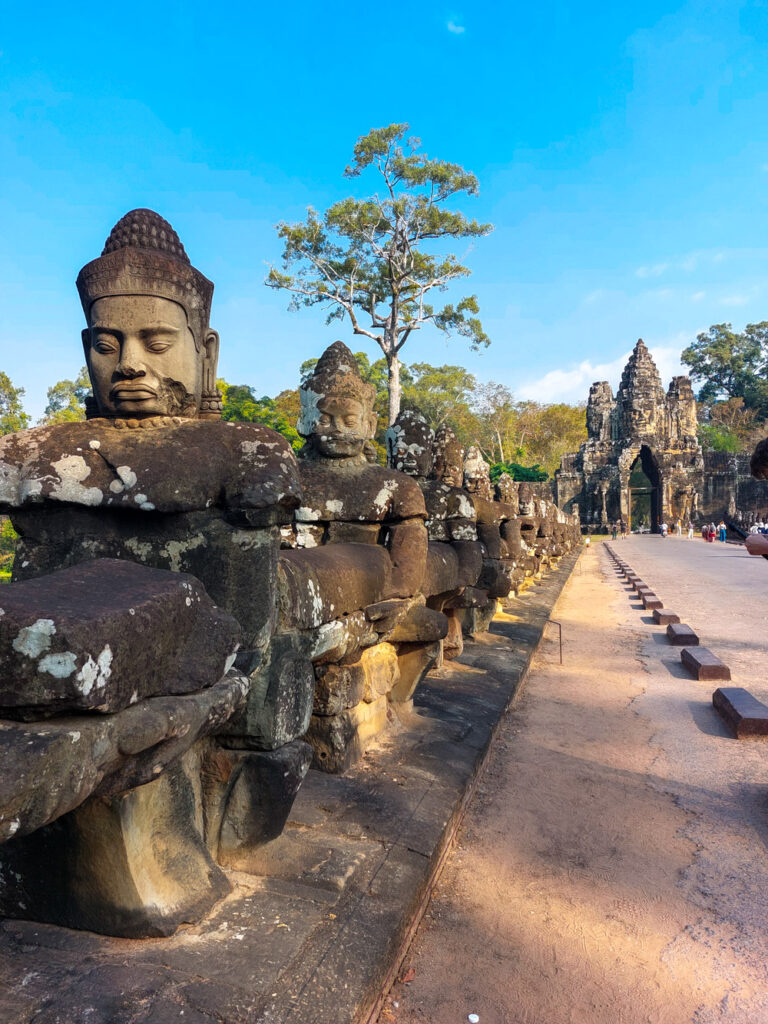
Bayon temple sits at the centre of Angkor Thom. This is an ancient sight surrounded by a square moat, similar to Angkor Wat but much larger. Angkor Thom was the last capital of the Khmer empire. You will enter the ancient city through the majestic Southern Gate. The Bayon Temple is also highly decorated with carvings depicting buddhist stories and legends.
Terrace of Elephants
The Terrace of Elephants is a short walk from the Bayon Temple. As you may have guessed, it is a stone temple flanked by elephant carvings. The terrace was once attached to a grand palace.
Ta Prohm Temple
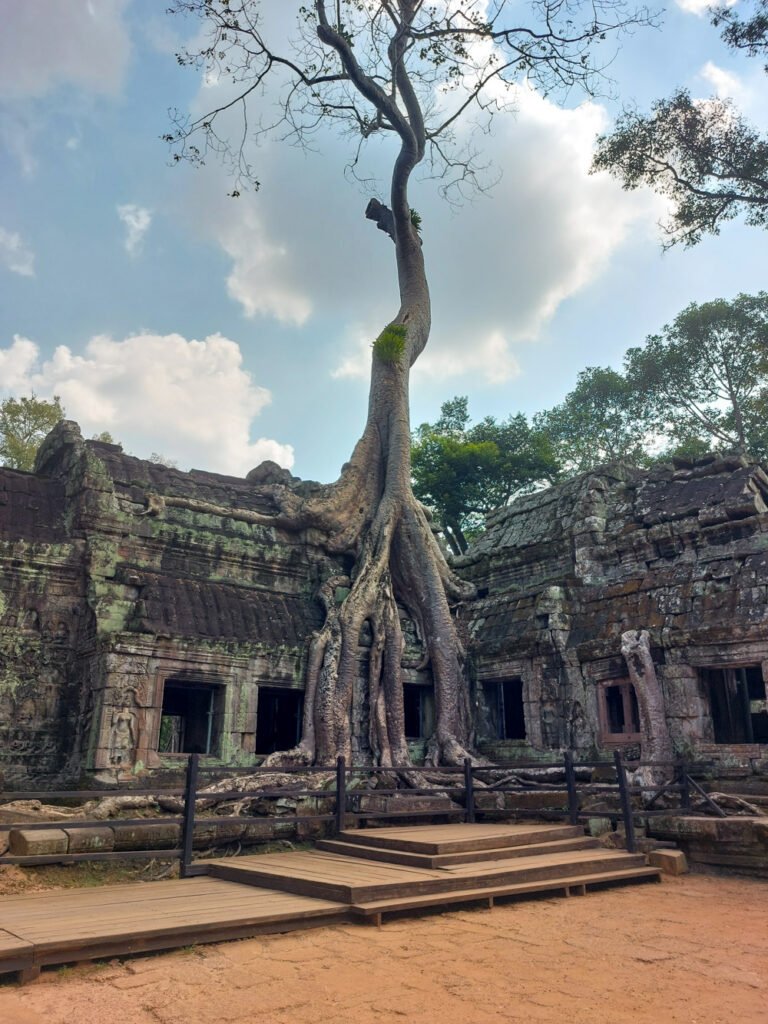
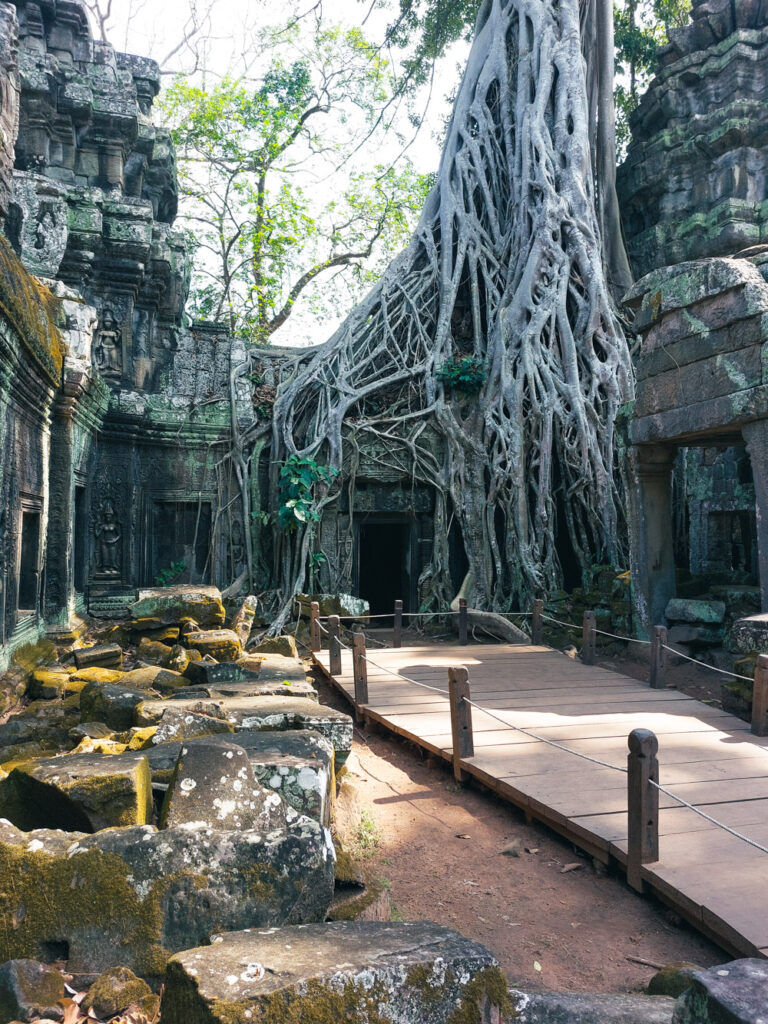
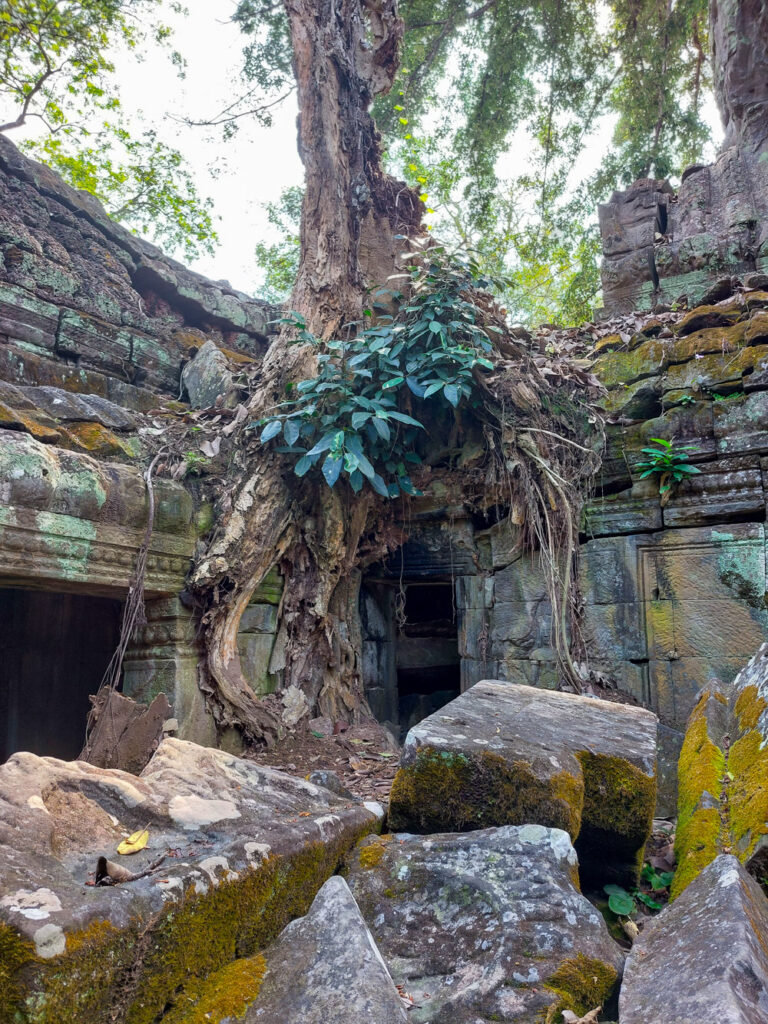
Ta Prohm was my favourite temple of the day. Throughout the years the temple had been left to nature and trees have most definitely taken over. The temple is fascinating to explore. You’ll find roots of trees snaking between rocks and huge trunks erupting through the walls. It’s crazy to see how enormous trees have managed to grow across stone. To add even more excitement, the Tomb Raider film with Angelina Jolie were filmed there.

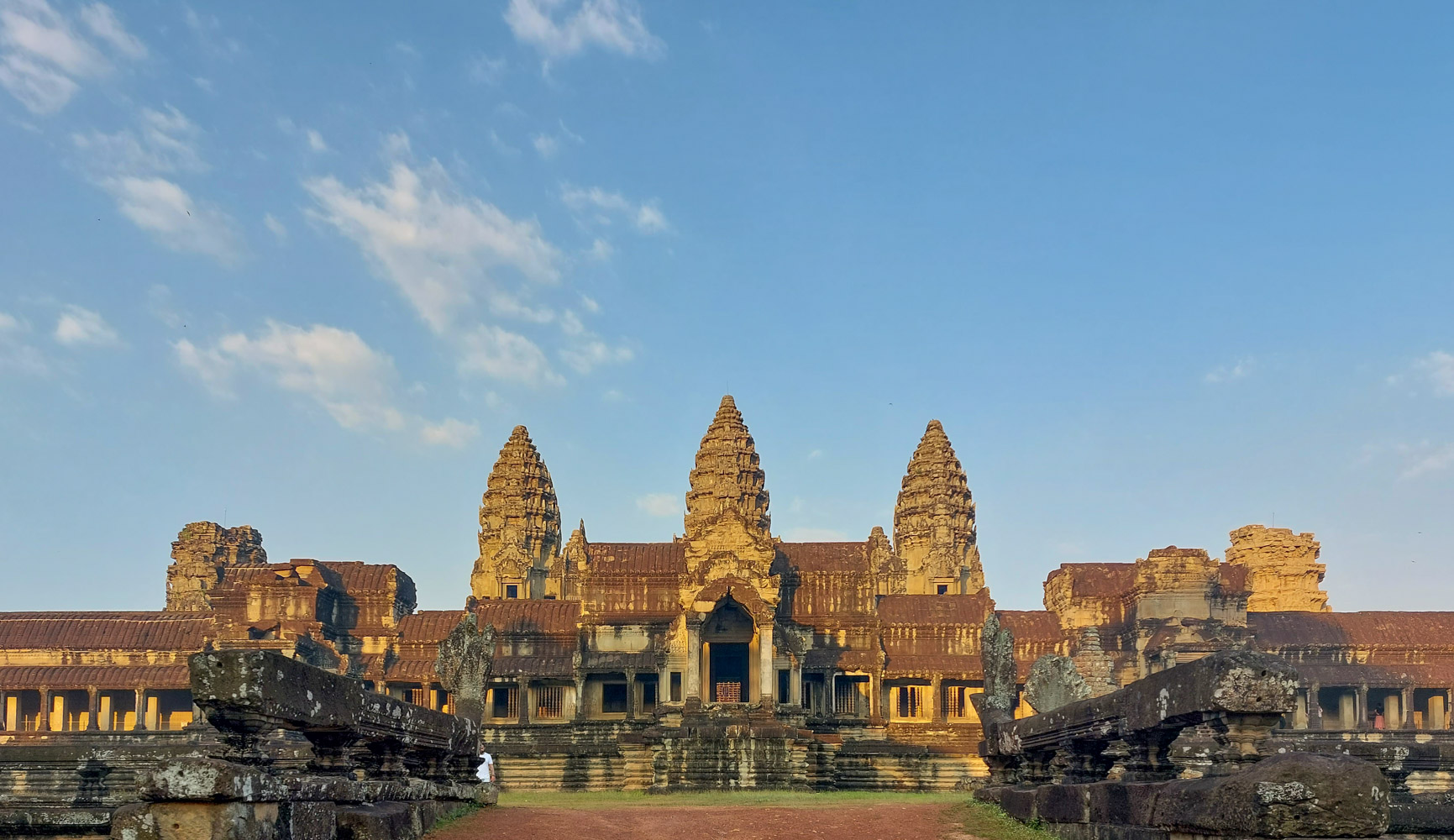
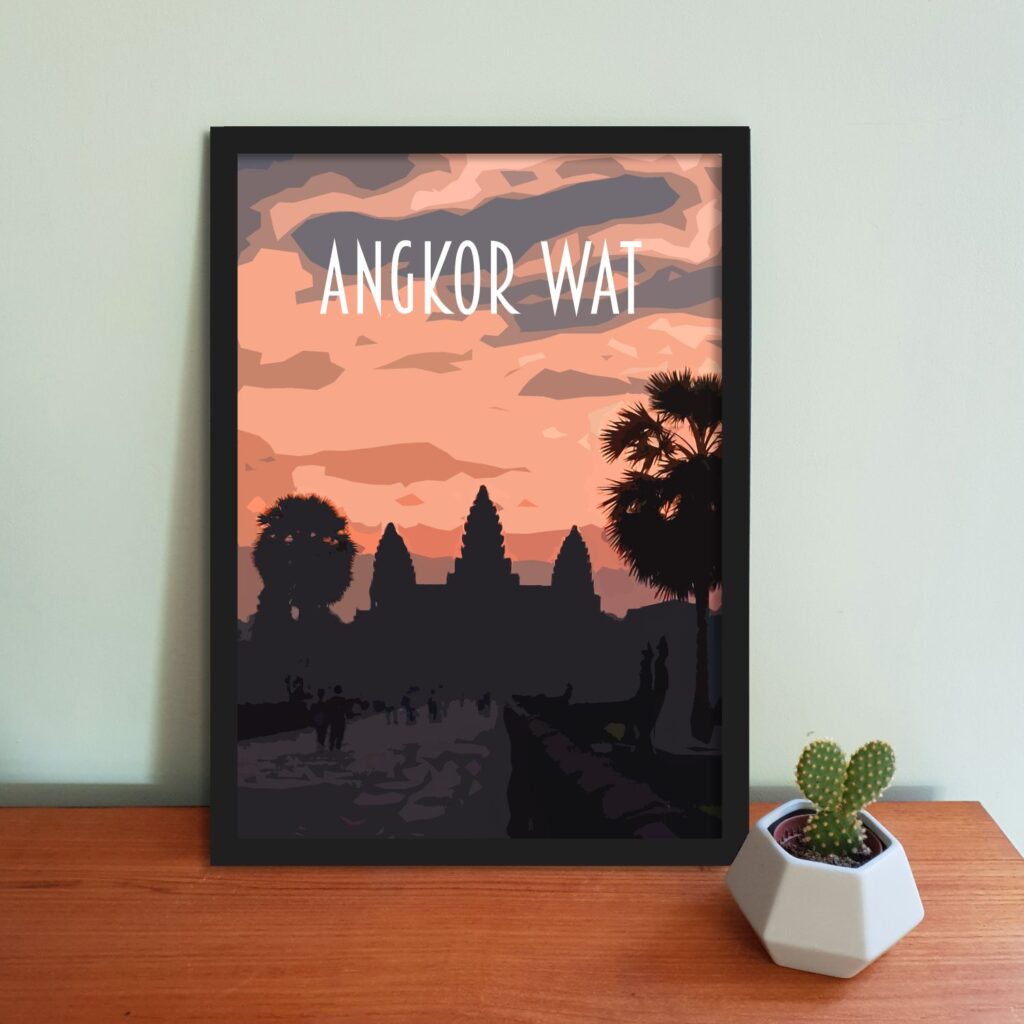
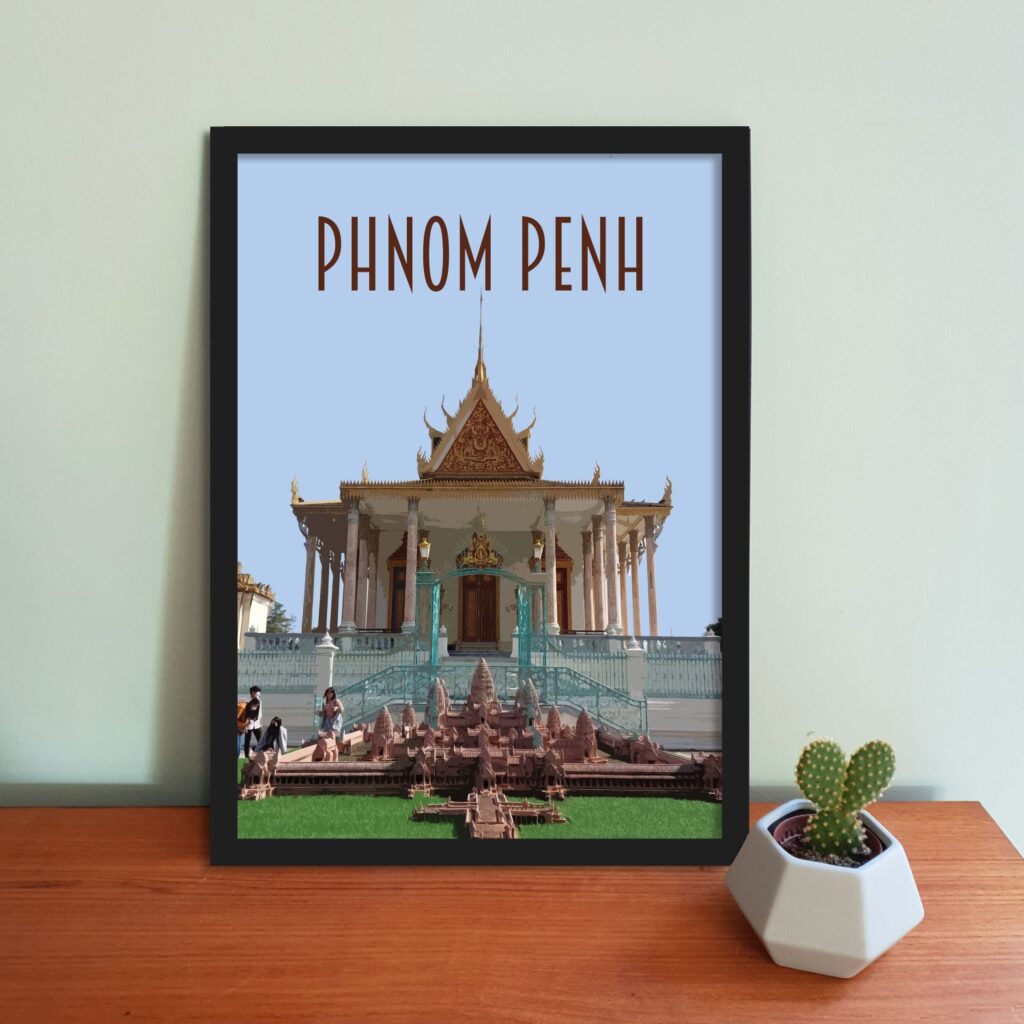
3 thoughts on “Tips for Visiting Angkor Wat”